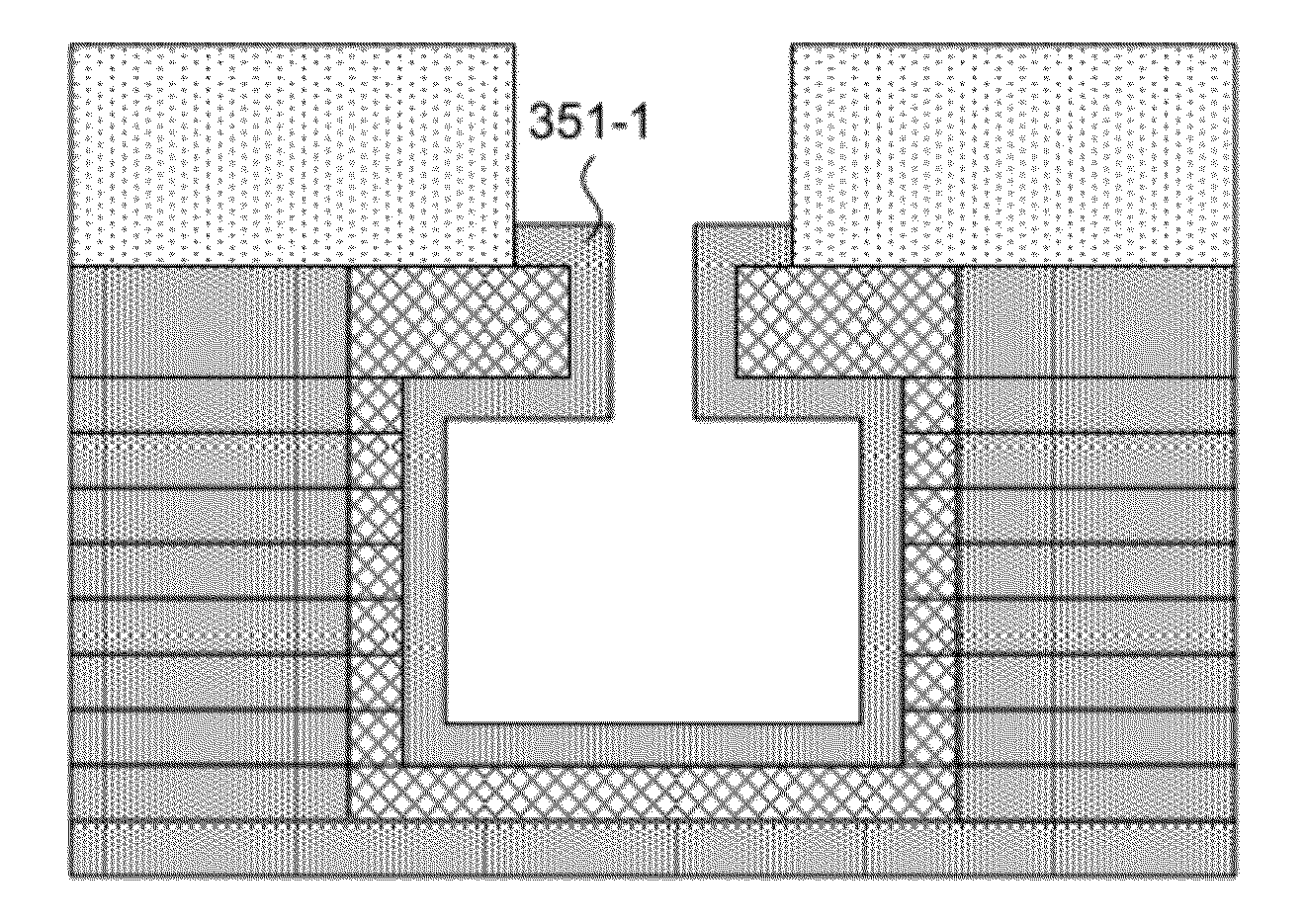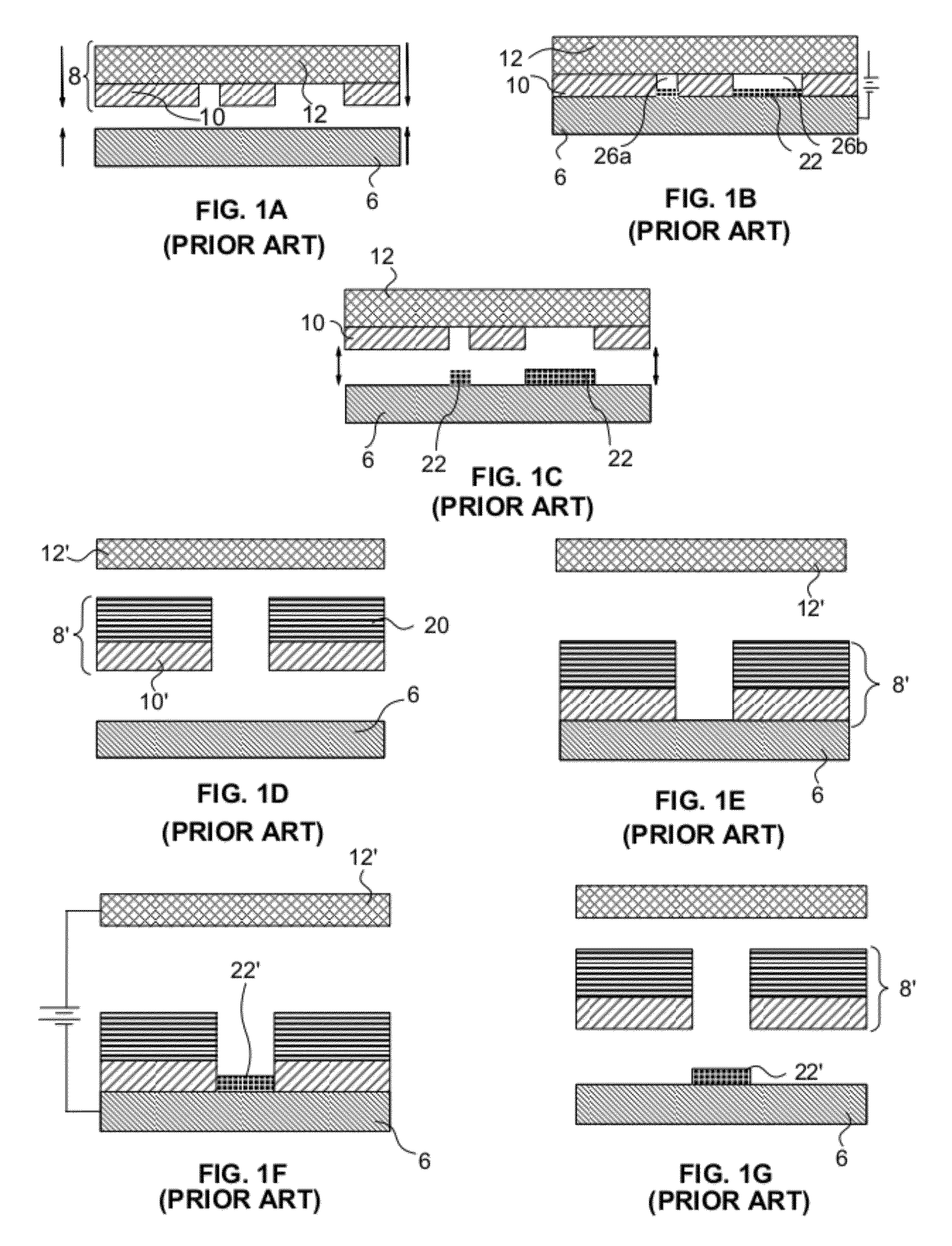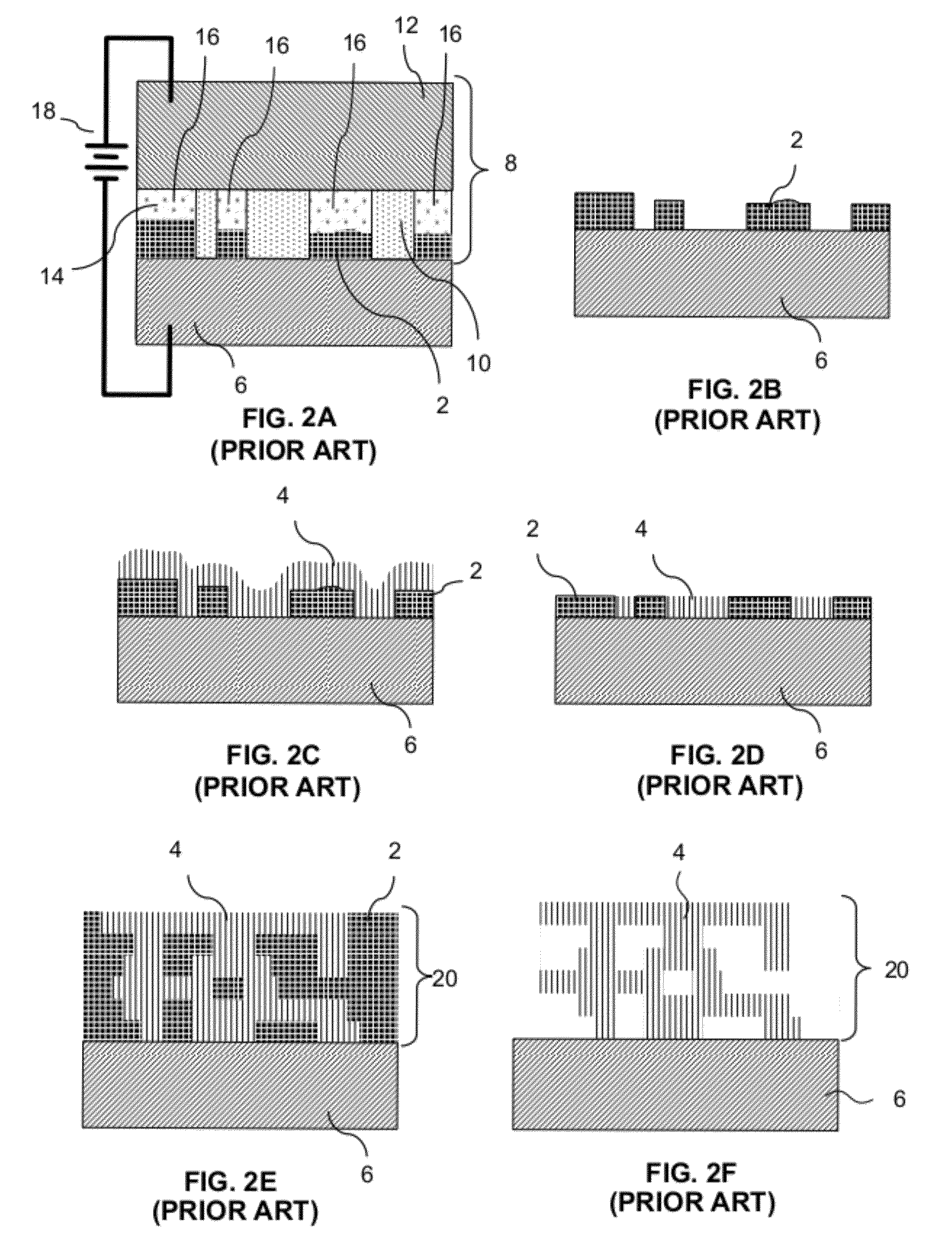Enhanced methods for at least partial in situ release of sacrificial material from cavities or channels and/or sealing of etching holes during fabrication of multi-layer microscale or millimeter-scale complex three-dimensional structures
a technology of sacrificial material and in situ release, which is applied in the manufacture of microstructural devices, microstructural technology, microstructural devices, etc., can solve the problem of destructive separation of masking material from the substra
- Summary
- Abstract
- Description
- Claims
- Application Information
AI Technical Summary
Benefits of technology
Problems solved by technology
Method used
Image
Examples
second embodiment
[0137]A process according to a variation of the second embodiment may include the following steps: (a) form the structure normally up through the penultimate capping layer with the exception that the penultimate capping layer may be initially planarized at a boundary level which is above a desired boundary level of the penultimate capping layer; (b) locate a mask on the penultimate layer with openings located over at least a portion of the etching openings (access region openings); (b) etch the sacrificial material from the etching openings and from at least a portion of passageway along a substantial length of the passage and to a depth that is greater (e.g. substantially greater) than a width of the etching openings; (c) with the mask still in place or a new patterned mask located in place or without a mask, deposit sacrificial material to fill the etching opening with it being understood that some plating into the released passage will occur but where the passage remains at least...
third embodiment
[0139]A process according to a variation of the third embodiment may include the following steps: (a) locate one or more etching openings in a passage capping layer that might otherwise be solid to provide an elongated access region; (b) form the structure normally up through the capping layer with the exception that the capping layer may be initially planarized at a boundary level which is above a desired boundary level of the capping layer; (c) locate a mask on the capping layer with openings located over at least a portion of the etching openings; (d) etch the sacrificial material from the etching openings and from at least a portion of passage along a substantial length of the passage and to a depth that is greater (e.g. substantially greater) than a width of the etching openings; (e) with the mask still in place or a new patterned mask located in place or with no mask in place, deposit structural material to fill the etching opening with it being understood that some plating in...
PUM
| Property | Measurement | Unit |
|---|---|---|
| Length | aaaaa | aaaaa |
| Length | aaaaa | aaaaa |
| Fraction | aaaaa | aaaaa |
Abstract
Description
Claims
Application Information
 Login to View More
Login to View More - R&D
- Intellectual Property
- Life Sciences
- Materials
- Tech Scout
- Unparalleled Data Quality
- Higher Quality Content
- 60% Fewer Hallucinations
Browse by: Latest US Patents, China's latest patents, Technical Efficacy Thesaurus, Application Domain, Technology Topic, Popular Technical Reports.
© 2025 PatSnap. All rights reserved.Legal|Privacy policy|Modern Slavery Act Transparency Statement|Sitemap|About US| Contact US: help@patsnap.com



